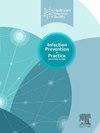Reducing waste and improving provider safety: a retrospective analysis with lessons from the COVID-19 Pandemic
IF 1.9
Q3 INFECTIOUS DISEASES
引用次数: 0
Abstract
Background
Reducing waste is an important component in comprehensive efforts to create greener intensive care units (ICU). Personal protective equipment (PPE) constitutes a significant share of the waste produced during ICU care. During the COVID-19 pandemic, the availability and supply of PPE posed substantial challenges globally. We aimed to investigate the lessons learned from the use of PPE during the pandemic (regarding the reduction of PPE consumption) and impact on hospital-acquired infections in healthcare workers.
Methods
Conducting a retrospective analysis, we examined all newly issued standard operating procedures for the ICU related to the pandemic. We observed for a potential effect on the use of PPE and scrutinized PPE consumption and patient day data focusing on potential differences between 2020 and the following years until 2023. The primary objective was to evaluate the impact of the protocols and measures on PPE consumption.
Results
Our analysis revealed that the implementation of four key infection control measures (cohorting, limitation of visits, institutional protocols for PPE use, staff training) lead to a substantial reduction in the use of masks and isolation gowns during the initial stages of the COVID-19 pandemic with no recorded hospital-acquired infections among healthcare workers.
Conclusion
It is possible to reduce PPE consumption without compromising the safety of our healthcare professionals. Our observations may guide future policies to reduce PPE consumption with the intent of reducing the environmental impact.
减少浪费和提高提供者安全:基于COVID-19大流行经验教训的回顾性分析
背景减少浪费是创建更环保的重症监护室(ICU)的重要组成部分。个人防护装备(PPE)在ICU护理期间产生的废物中占很大比例。在2019冠状病毒病大流行期间,个人防护装备的可用性和供应给全球带来了重大挑战。我们的目的是调查大流行期间使用个人防护装备的经验教训(关于减少个人防护装备的消耗)以及对卫生保健工作者医院获得性感染的影响。方法进行回顾性分析,我们检查了所有新发布的与大流行相关的ICU标准操作程序。我们观察了对个人防护用品使用的潜在影响,并仔细检查了个人防护用品消费量和患者日数据,重点关注2020年与2023年之间的潜在差异。主要目标是评估方案和措施对个人防护装备消费的影响。结果我们的分析显示,在COVID-19大流行的初始阶段,实施了四项关键感染控制措施(分组、限制出诊、机构使用个人防护装备的方案、工作人员培训),导致口罩和隔离服的使用大幅减少,卫生保健工作者中没有记录到医院获得性感染。结论在不影响卫生专业人员安全的情况下减少个人防护用品的使用是可能的。我们的观察结果可以指导未来减少PPE消费的政策,以减少对环境的影响。
本文章由计算机程序翻译,如有差异,请以英文原文为准。
求助全文
约1分钟内获得全文
求助全文
来源期刊

Infection Prevention in Practice
Medicine-Public Health, Environmental and Occupational Health
CiteScore
4.80
自引率
0.00%
发文量
58
审稿时长
61 days
 求助内容:
求助内容: 应助结果提醒方式:
应助结果提醒方式:


